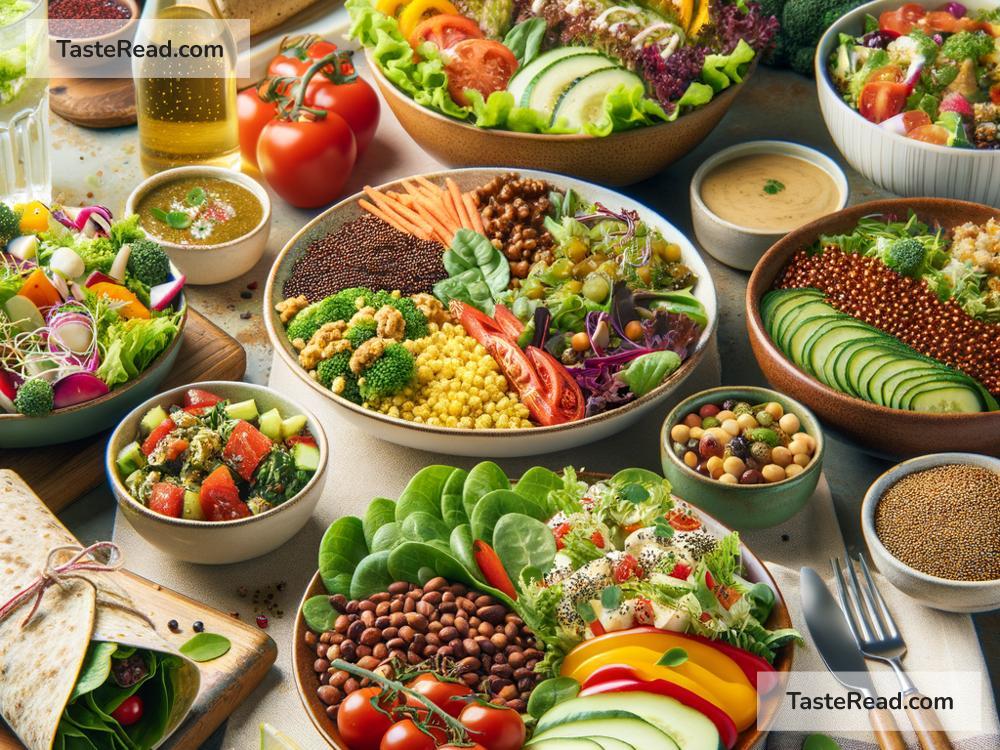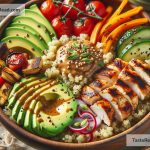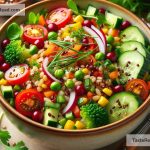Why Grain-Free Lunch Options Are Rising in Popularity
In recent years, there’s been a noticeable shift toward grain-free diets, meaning people are choosing foods that don’t contain grains like wheat, rice, or corn. This change is especially evident in lunch menus around the globe, where grain-free options are becoming more common and popular. But why is this happening? Let’s dive into the reasons behind this trend.
Health and Dietary Concerns
One of the primary reasons people are moving towards grain-free diets is because of health concerns. Some individuals have specific health conditions, such as celiac disease or gluten sensitivity, that require them to avoid grains. For these folks, grain-free lunch options are not just a preference but a necessity.
Moreover, even those without specific health conditions are opting for grain-free meals, believing they lead to better health. Some believe that cutting out grains can lead to improved digestion, more energy, and even weight loss. This belief has propelled the demand for grain-free lunch options, as people try to eat what they think is best for their bodies.
The Paleo and Keto Movements
The rise in popularity of specific diets, like the Paleo and Keto diets, has also played a significant role in the grain-free trend. The Paleo diet, for instance, is based on the idea of eating like our ancestors, which means avoiding grains and focusing on meats, fruits, and vegetables. Similarly, the Keto diet restricts carbohydrate intake, including grains, to force the body into a state of ketosis for weight loss.
These diets have garnered massive followings, with many people reporting positive health outcomes. As a result, restaurants, cafes, and even school cafeterias are adapting by offering more grain-free lunch options to cater to followers of these diets.
Environmental and Ethical Considerations
Another factor contributing to the rise of grain-free lunch options is a growing concern for the environment and ethical eating. Some critics argue that large-scale grain farming can harm the environment through the use of pesticides, water consumption, and land use. In contrast, supporting local farmers who produce fruits, vegetables, and grass-fed meats is seen as more sustainable and ethical.
This environmental consciousness has led many to choose grain-free meals as a way to reduce their ecological footprint and support more sustainable food sources.
The Quest for Variety and Innovation
Our palates are constantly seeking new and exciting flavors and textures, and grain-free meals offer a unique culinary experience. Chefs and home cooks alike are getting creative with grain-free ingredients, crafting dishes that are not only healthy but delicious and visually appealing.
From cauliflower rice and zucchini noodles to coconut flour pancakes, the possibilities are endless. This innovation in the kitchen has made grain-free lunches more appealing to a broader audience, not just those eating grain-free for health reasons.
Social Media and Celebrity Influence
Lastly, we can’t ignore the impact of social media and celebrities on the popularity of grain-free lunches. Many influencers and public figures share their grain-free lifestyle with millions of followers, showcasing attractive meals that are also healthy. This visibility has made grain-free diets more mainstream, encouraging others to try out this way of eating.
Celebrities and influencers often share not just recipes but also the perceived benefits of going grain-free, such as improved skin, better digestion, and increased energy. Their testimonials have motivated many of their followers to adopt a grain-free diet and incorporate more grain-free options into their meals, including lunch.
Conclusion
The rise in popularity of grain-free lunch options is driven by a mix of health concerns, dietary movements, environmental ethics, culinary innovation, and the influence of social media and celebrities. As more people look for ways to eat healthier, reduce their environmental impact, and try new and exciting foods, it’s likely that grain-free options will continue to grow in popularity.
Whether you’re considering going grain-free for health reasons, environmental concerns, or just to shake up your meal routine, there’s no denying that this trend is reshaping the way we think about and consume lunch. As we move forward, expect to see even more delicious and innovative grain-free options popping up on menus and in kitchens around the world.


